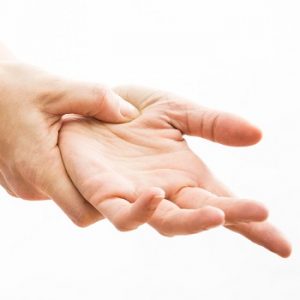
More evidence that low-calorie sweeteners are bad for your health
Studies show that artificial sweeteners can raise the risk of hypertension, metabolic syndrome, type 2 diabetes and heart disease, including stroke.

Natural Health News — Acupressure could be a low-cost, at-home solution to a suite of persistent side effects that linger after breast cancer treatment ends.
The study, published in JNCI Cancer Spectrum, looked at the impact of acupressure on symptoms that frequently accompany fatigue in this population: chronic pain, anxiety, depression and poor sleep. The researchers from the University of Michigan Rogel Cancer Center found acupressure improved all of these symptoms compared with standard care.
The team first reported that acupressure helped reduce fatigue in breast cancer survivors in 2016. That study involved breast cancer survivors who reported fatigue. The women were randomized to one of two types of acupressure or to usual care, which included typical sleep-management techniques. The women were taught how to find and stimulate the acupressure points so that they could perform it at home once per day for six weeks.
More than fatigue
Of the 424 survivors experiencing fatigue from the original study, researchers found half had at least one other symptom and 17% experienced all of them.
According to study author Suzanna M. Zick, N.D., MPH, research associate professor of family medicine at Michigan Medicine, “It was actually unusual for a woman to have just fatigue. These long-term side effects are a big problem. For some women, they are significant barriers in their life”.
So the new analysis focused on the 288 patients who reported symptoms in addition to fatigue. They were asked weekly about fatigue, sleep quality, depressive symptoms, anxiety and pain.
Tailored treatments
Acupressure is derived from traditional Chinese medicine. It involves applying pressure with fingers, thumbs or a device to specific points on the body. Researchers tested two types of acupressure: relaxing acupressure, which is traditionally used to treat insomnia, and stimulating acupressure, which is used to increase energy. The two techniques differ by which points on the body are stimulated.
After six weeks, relaxing acupressure was significantly better than stimulating acupressure or standard care at improving depressive symptoms and sleep. Both types of acupressure were more effective than standard care for improving anxiety, severity of pain and pain interfering with daily life.
“If you have a person who is fatigued and depressed, it would be the obvious conclusion to use relaxing acupressure. For anxiety or pain, either approach might work,” Zick says.
The researchers also assessed whether improving one symptom helped improve other symptoms. They found that improving symptoms of depression improved sleep quality, accounting for about 20 percent of the improvement in fatigue.
“That means we don’t know 80% of what’s impacting fatigue. Depressive symptoms and sleep quality are a small part, and it makes sense. But clearly, there are other factors,” Zick says.
She suspects these symptoms impact several different mechanistic pathways, possibly impacting the brain in multiple ways. This means treatments will likely need to be tailored and varied based on a woman’s symptoms and other factors.
Helping women to help themselves
The researchers plan to gather more information using neuroimaging to understand the brain pathways involved. They’re also currently conducting two clinical trials to look at using an acupressure app. Working with University of Michigan College of Engineering experts, they developed a special wand to assist patients in performing acupressure. The wand helps ensure appropriate pressure and tracks how long patients use it.
Acupressure is an appealing option because it can be done at home with minimal negative effects. The study showed that women could learn to apply correct pressure to the appropriate points. Some women reported minor bruising at the acupressure sites.

Please subscribe me to your newsletter mailing list. I have read the
privacy statement